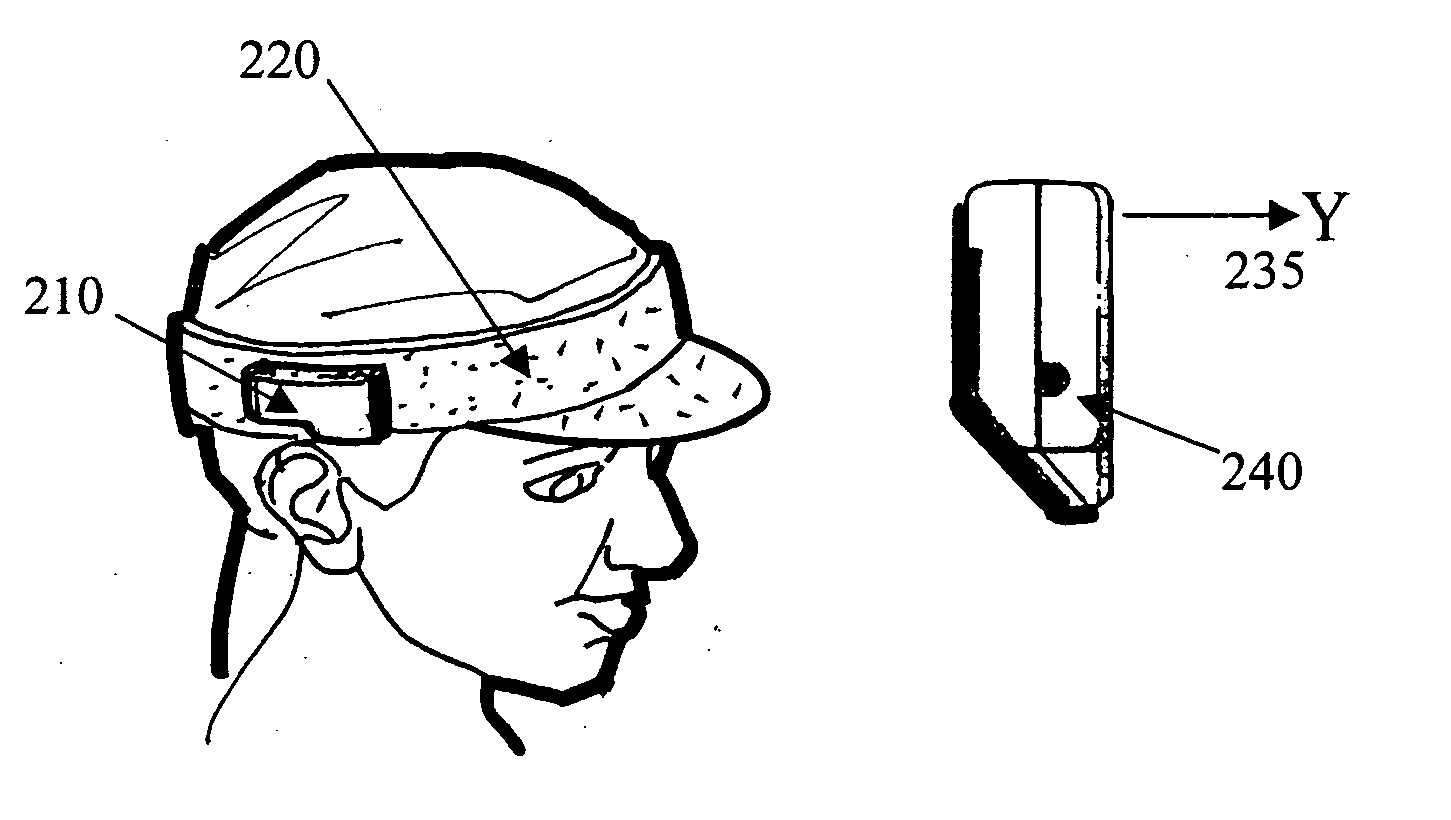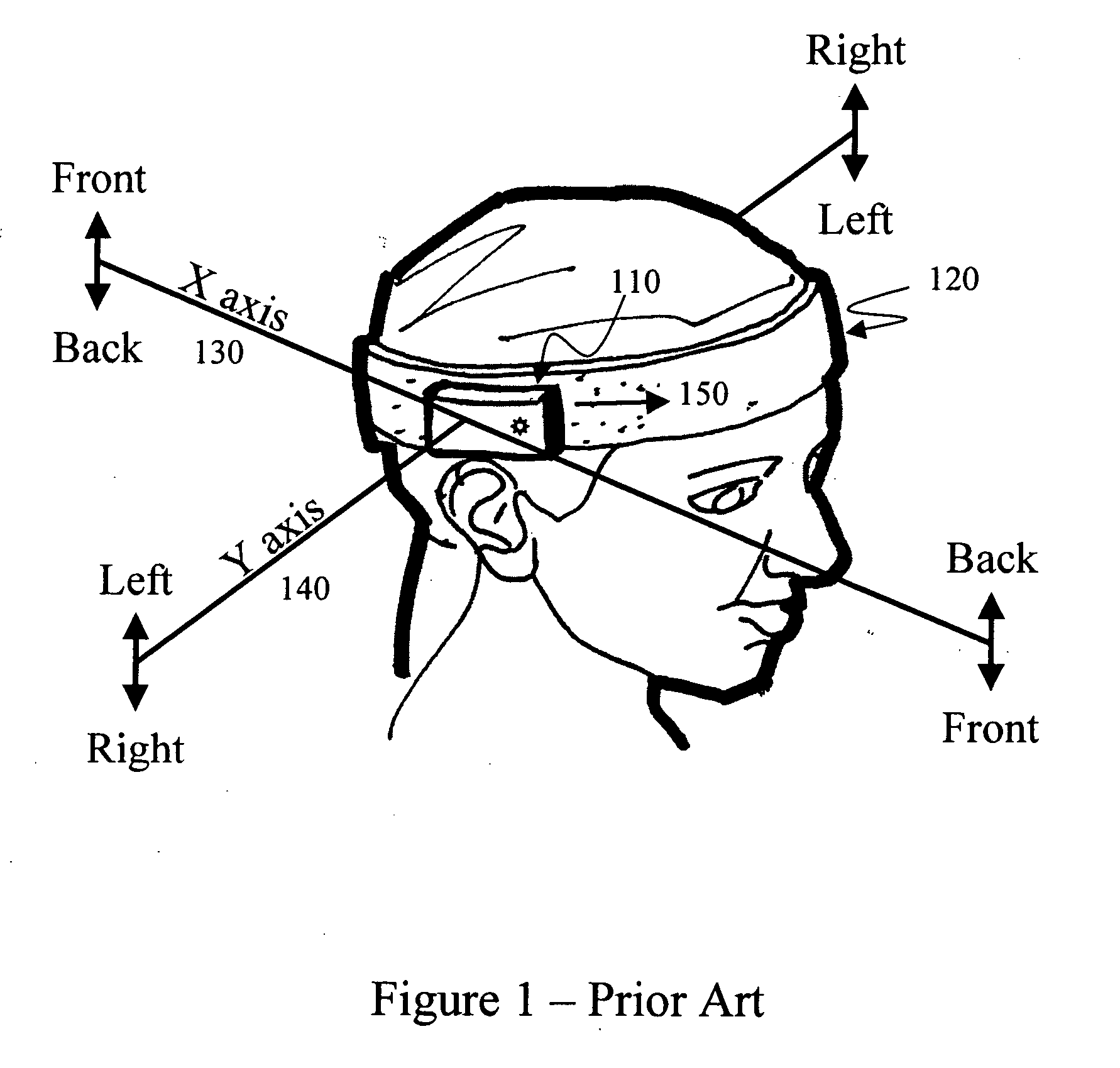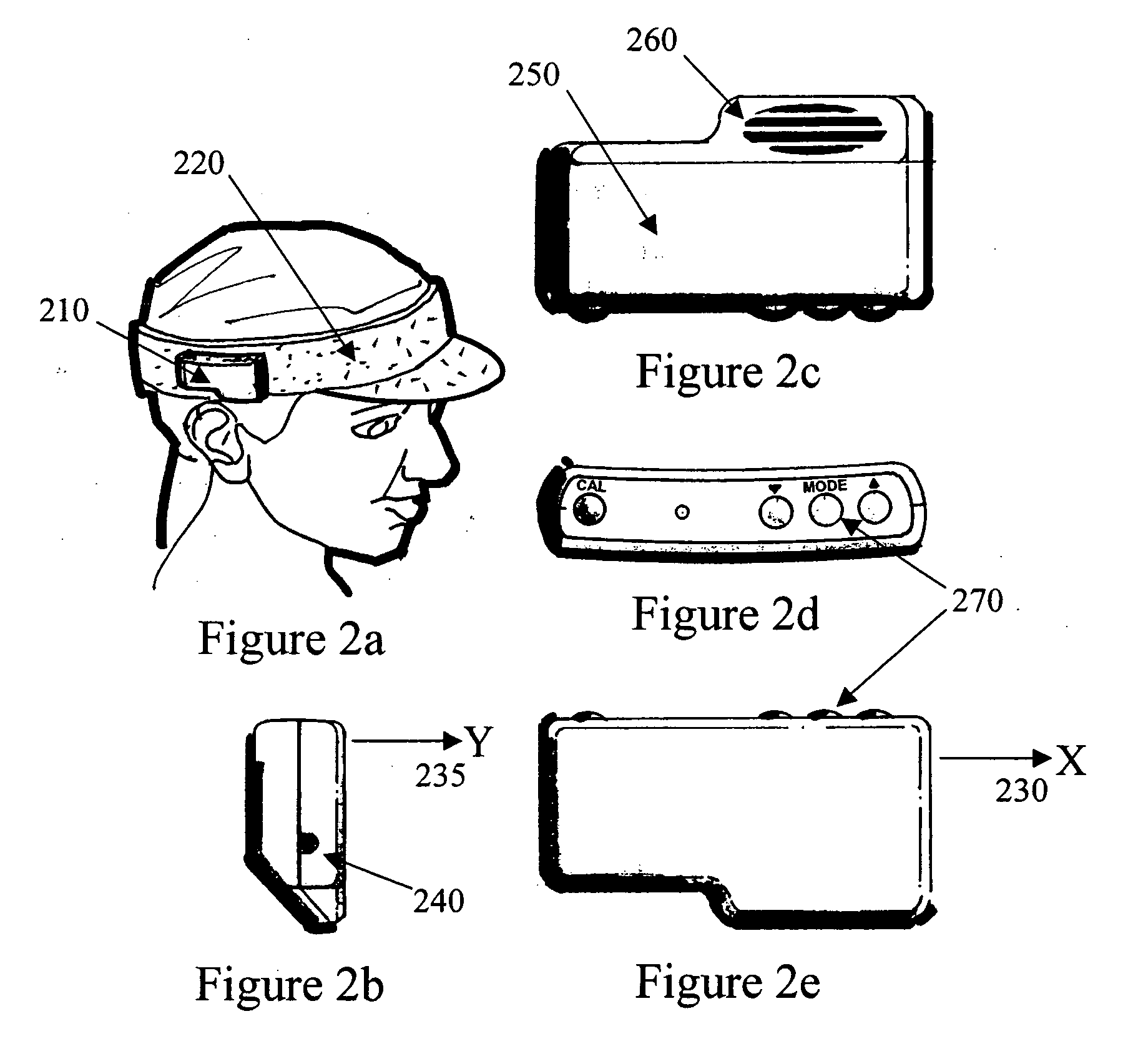Orientation and motion sensing in athletic training systems, physical rehabilitation and evaluation systems, and hand-held devices
a technology of orientation and motion sensing, applied in the field of athletic training, physical rehabilitation and evaluation, and handheld devices, can solve the problems of high sensitivity and accuracy of accelerometers, inability of users of conventional athletic training systems to recognize or respond to visible or audible indications provided by the system, and generate misleading signals. , to achieve the effect of increasing sensitivity and accuracy
- Summary
- Abstract
- Description
- Claims
- Application Information
AI Technical Summary
Benefits of technology
Problems solved by technology
Method used
Image
Examples
Embodiment Construction
[0033] The disclosures of U.S. Provisional Patent Application No. 60 / 698,995 filed Jul. 13, 2005 entitled MONITORING, EVALUATION AND TRAINING SYSTEM FOR ATHLETICS AND PHYSICAL REHABILITATION INCLUDING STUDENT UNIT AND REMOTE UNIT COMMUNICABLE THEREWITH, and U.S. Provisional Patent Application No. 60 / 719,161 filed Sep. 21, 2005 entitled MONITORING, EVALUATION AND TRAINING SYSTEM FOR ATHLETICS AND PHYSICAL REHABILITATION INCLUDING STUDENT UNIT AND REMOTE UNIT COMMUNICABLE THEREWITH, are incorporated herein by reference in their entirety.
[0034]FIG. 1 depicts a conventional orientation and motion-sensing device 110 attached to the head of a user. For example, the conventional device 110 may be attached to a headband 120 using one or more Velcro™ fasteners. As shown in FIG. 1, the device 110 may be attached to the user's headband to position the device over his or her right ear. The device 110 includes a number of tilt indicators (not shown) operative to detect and monitor the orientati...
PUM
 Login to View More
Login to View More Abstract
Description
Claims
Application Information
 Login to View More
Login to View More - R&D
- Intellectual Property
- Life Sciences
- Materials
- Tech Scout
- Unparalleled Data Quality
- Higher Quality Content
- 60% Fewer Hallucinations
Browse by: Latest US Patents, China's latest patents, Technical Efficacy Thesaurus, Application Domain, Technology Topic, Popular Technical Reports.
© 2025 PatSnap. All rights reserved.Legal|Privacy policy|Modern Slavery Act Transparency Statement|Sitemap|About US| Contact US: help@patsnap.com



